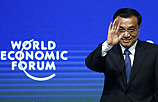Huawei wants to improve US reception
Updated: 2015-02-18 11:53
By Jack Freifelder in New York(China Daily USA)
|
||||||||
Huawei Technologies Co is looking to make 2015 the year that it extends the reach of its smartphones to the United States, a potentially tough road for the Shenzhen-based multinational.
"The US is a tough market for any smartphone vendors who are not Apple and Samsung," wrote CK Lu, a principal research analyst covering the IT sector for global technology research firm Gartner Inc. "Huawei used to probe the market via pre-paid carriers, selling low-end [devices] with carrier-branded phones, yet it has not worked out for Huawei.
"The company has successfully built up an on-line channel brand, Honor, to compete with Xiaomi in China," Lu told China Daily on Feb 12 in an e-mail. "Huawei [has] also significantly moved up its portfolio, being able to sell more high tiers such as P7 and Mate 7, which makes it different from other Chinese vendors who still focus more on low-cost at affordable price. But the brand has to be seen with more international flavors."
Kitty Fok, managing director of IDC China (International Data Corp), said Huawei has a number of things going for it as it attempts to push its brand in new markets, including: a position as one of the "key" network-equipment providers to Chinese telecom carriers, and HiSilicon, a chipmaker in Shenzhen.
Silicon is an element that is widely used as a semiconducting material for integrated circuits, which form the basis of most computers, smartphones and other high-tech devices.
"Huawei is very focused to put their technology into their products with affordable pricing," Fok wrote in a Feb 12 email to China Daily. "That I believe is their key advantage. Their product Mate 7 has very good performance in China, especially with stronger signal under limited connectivity networks in China.
"However, entering the US market is always a big challenge for the Chinese vendor, especially for phones," she wrote. "The US market is highly dependent on bundling sales with telecom services, which is one of the reasons for Lenovo's [move] to acquire Motorola."
Samsung Electronics Co remained the world's largest smartphone vendor in the fourth quarter of 2014, with 75.1 million devices shipped around the world (20 percent of the market), according to data from IDC's Worldwide Quarterly Mobile Phone Tracker.
Apple Inc followed with 74.5 million units, or 19.85 percent of the global market share.
Other global players, including domestic Chinese leaders Lenovo Group (24.7 million), Huawei (23.5 million) and Xiaomi Technology Co (16.6 million), ranked third, fourth and fifth on that list. The companies garnered 6.6 percent, 6.3 and 4.4 percent of the market during the period, respectively.
Huawei delivered 73.6 million devices in 2014, IDC said, up more than 2,000 percent from a volume of 3.3 million smartphone units in 2011, according to an April 2011 report from Reuters.
Another homegrown smartphone maker, Xiaomi, said it sold 61.1 million units in 2014, surging 227 percent year on year. Last year Xiaomi announced plans for 10 new countries, including Brazil, India, Mexico and Russia.
In 2013, Huawei executives said the company would invest $600 million in 5G research through 2017. The company will continue to pursue its expansion efforts in smartphone and enterprise computing.
"We will try to rival Samsung and Apple globally in 2015," Shao Yang, vice-president of Huawei Consumer Business Group said in a January interview with Xinhua. Huawei aims to increase smartphone shipments to 100 million units and sales revenue to $16 billion in 2015.
Huawei still has to overcome the obstacle of reaching US consumers, said Bill Plummer, Huawei's vice-president of external affairs.
"The company is coming of age in terms of building a brand; that's a huge priority," Plummer said in a recent interview with CNBC. "We had to prove ourselves. Last year we piloted some things; this year we're making a bigger investment."
Lu said: "Huawei needs to fix the brand-recognition issue in the global market, especially in the US. We believe the rise of smartphone sales through on-line channels, if any, might open up an opportunity for Chinese vendors such as Huawei."
Huawei phones are available through Amazon.com and the website GetHuawei.com, which was launched last year.
"Bottom line: The US is a tough market and it requires lots of investment, time and patience for new Chinese entrants," Lu said.
Xinhua and Reuters contributed to this story.
jackfreifelder@chinadailyusa.com

 Tibetans rejoice at twin New Year celebration
Tibetans rejoice at twin New Year celebration
 Across America over the week (from Feb 13 to 19)
Across America over the week (from Feb 13 to 19)
 Chinese in the South remembered
Chinese in the South remembered
 Ringing in Chinese New Year on the Nasdaq
Ringing in Chinese New Year on the Nasdaq
 Spring Festival greetings from the ambassadors
Spring Festival greetings from the ambassadors
 Las Vegas lights up for Lunar New Year
Las Vegas lights up for Lunar New Year
 Spring Festival fireworks in New York City
Spring Festival fireworks in New York City
 Going abroad for Lunar New Year
Going abroad for Lunar New Year
Most Viewed
Editor's Picks

|

|

|

|

|

|
Today's Top News
Chinese students, faculty to study at Missouri university
Andover to deepen ties with China
Chinese in the South remembered
California port chief upbeat on agreement to end dock strike
NBA China CEO sees the sport proliferate
China tilts to Kabul with US pullout
No letup seen for business travel
Chinese visitors set to celebrate New Year worldwide
US Weekly

|

|







